Understanding ABA Therapy and Its Impact on Non-Verbal Children with Autism
Applied Behavior Analysis (ABA) therapy is a widely recognized, evidence-based intervention that plays a crucial role in supporting communication development among non-verbal children with autism. By tailoring strategies to each child's unique needs, ABA helps foster functional communication skills, social interaction, and independence. This article explores how ABA therapy works, its methods, benefits, and the scientific evidence that underscores its effectiveness.
Fundamentals of ABA Therapy for Autism
How ABA teaches functional communication skills
ABA therapy plays a crucial role in helping children with autism, especially those who are non-verbal, develop effective ways to communicate. Through positive reinforcement, children are encouraged to learn and use alternative communication methods. Techniques such as prompting, modeling, and structured routines help children grasp how to express their needs, wants, or feelings.
ABA incorporates visual supports like picture exchange systems (PECS), communication devices, and sign language to make learning accessible. Speech-generating devices and other augmentative tools are also used to facilitate communication. The therapy focuses on breaking down complex communication skills into small, manageable steps, enabling children to gradually master expressive and receptive language.
Use of visual supports and augmentative devices
Visual supports are integral to ABA therapy. These tools include picture cards, signs, and communication apps that help children understand and convey messages. PECS, for example, allows children to exchange pictures for items or activities they desire, promoting functional communication.
Augmentative and Alternative Communication (AAC) devices, such as speech synthesis tools, assist non-verbal children in expressing themselves. These devices can include tablets with communication apps or low-tech picture boards. Consistent use of visual supports helps children recognize social cues, interpret facial expressions, and develop turn-taking skills.
Personalized intervention plans based on thorough assessments
Each child's needs are unique, and ABA therapy begins with comprehensive assessments to understand their specific strengths and challenges. Based on these evaluations, therapists develop individualized intervention plans focusing on the child's current communication abilities and future goals.
The plans often include tailored techniques for teaching verbal and non-verbal skills, with adjustments made as the child progresses. Regular progress tracking ensures that interventions are effective and aligned with the child's developing needs.
| Aspect | Approach | Details |
|---|---|---|
| Communication Methods | Visual supports, PECS, devices | Using images, signs, and technology to facilitate expression |
| Customization | Individualized plans | Tailoring strategies based on assessments and ongoing progress |
| Skill Development | Step-by-step teaching | Breaking down skills into manageable parts to improve learning and mastery |
By focusing on personalized, visually supported, and systematically structured approaches, ABA therapy significantly enhances communication abilities in children with autism, paving the way for better social integration and independence.
Key Techniques and Methods in ABA for Communication Development
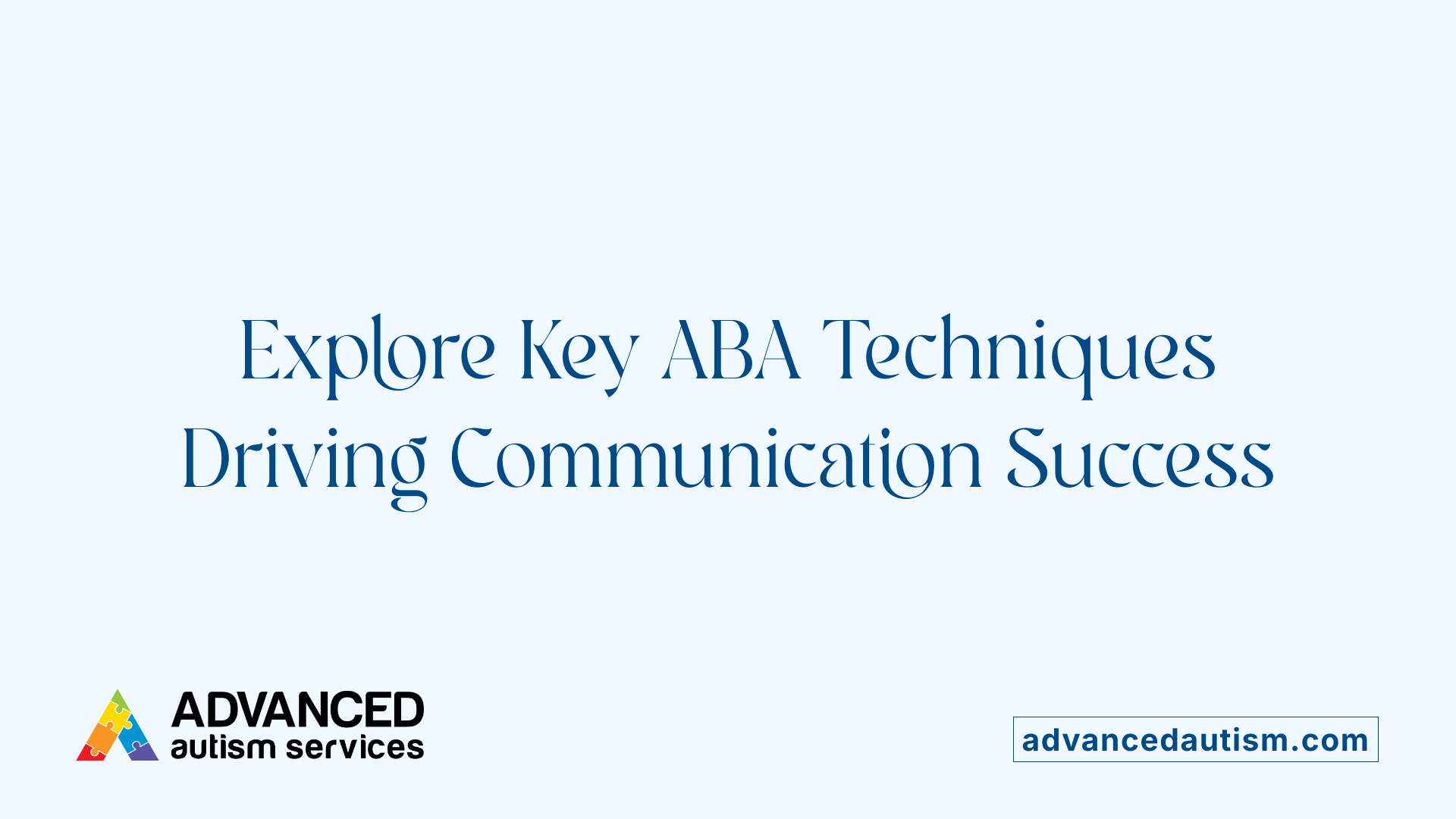
What methods does ABA therapy use to develop communication skills in children with autism?
ABA therapy employs a variety of innovative techniques tailored to foster communication abilities in children with autism. These methods are designed to break down complex communication behaviors into smaller, manageable steps, facilitating easier learning and mastery.
One fundamental approach is Discrete Trial Training (DTT). In DTT, therapists deliver structured instructions or prompts, wait for the child's response, and then reinforce correct responses with praise or rewards. This systematic repetition helps children learn specific communication skills efficiently.
Another technique is Natural Environment Teaching (NET). This method encourages learning in everyday settings, during play or routines, making skills more meaningful and applicable in real life. For example, a child might learn to request a toy during playtime, promoting spontaneous use of words or gestures.
Pivotal Response Training (PRT) focuses on motivating children to initiate communication by targeting pivotal areas such as motivation, response to multiple cues, and self-management. PRT encourages children to communicate voluntarily, which naturally leads to improvements in social and communication skills.
Functional Communication Training (FCT) is designed to replace challenging behaviors with appropriate means of communication. It teaches children to use gestures, words, or communication devices like PECS or speech-generating devices to express their needs.
In addition to these behavioral strategies, ABA also integrates augmentative and alternative communication (AAC) systems, including picture exchange systems, sign language, and communication boards. These tools support children who are non-verbal or minimally verbal, enabling them to communicate effectively.
Therapists often use visual supports, modeling, prompt fading, and imitation as techniques within these frameworks. Positive reinforcement remains central, motivating children to practice and use new communication skills confidently.
By combining structured methods like DTT with more naturalistic strategies like NET and incidental teaching, ABA creates a flexible, adaptable approach that promotes communication skills in various settings, ensuring children can generalize these skills in everyday life.
Benefits and Long-Term Outcomes of ABA in Communication Skills
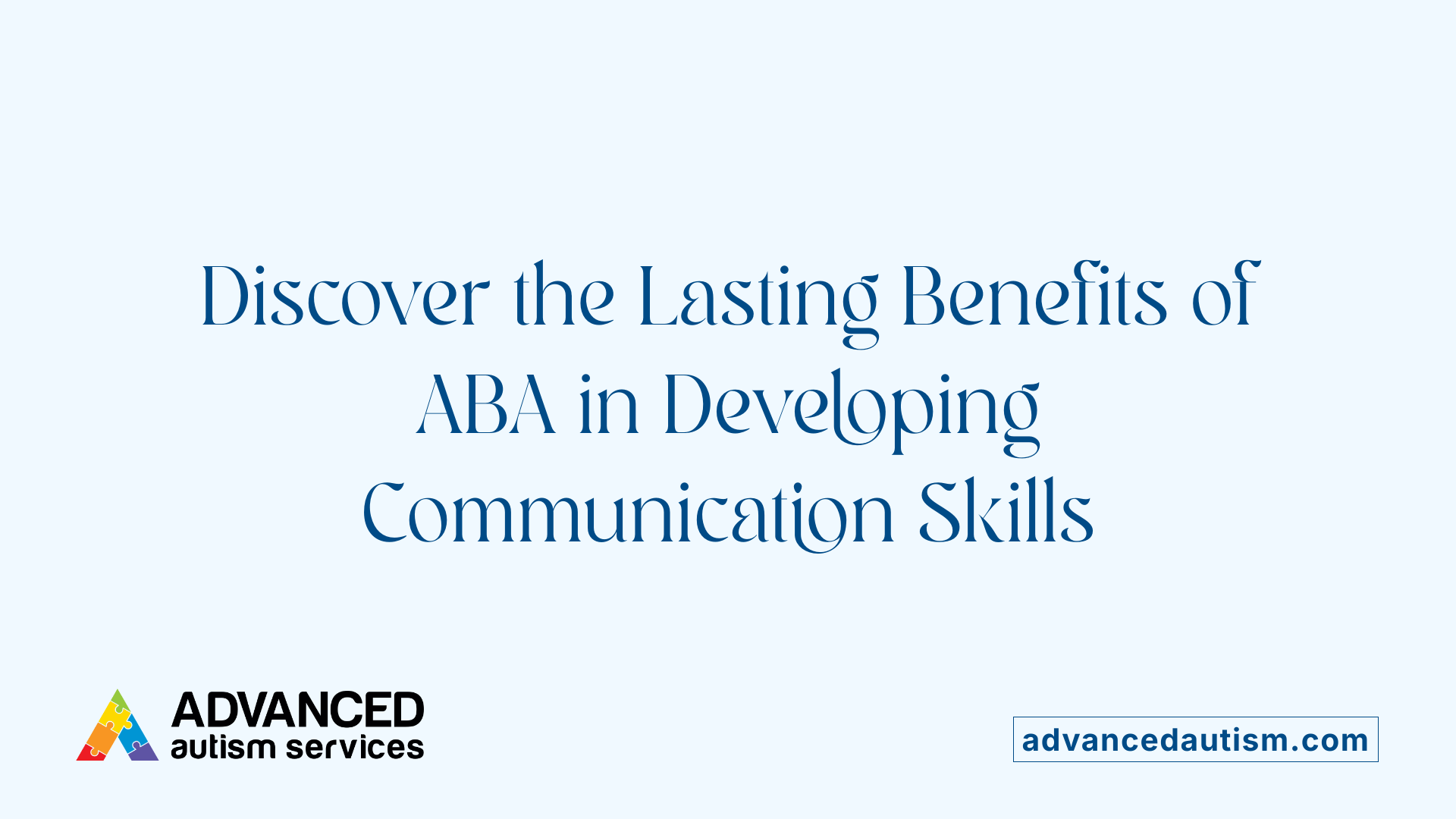
What are the benefits and outcomes of ABA therapy in promoting communication for non-verbal children with autism?
ABA therapy provides substantial support for children with autism who are non-verbal by teaching both verbal and non-verbal communication methods. Through detailed, personalized programs, children learn to use gestures, facial expressions, sign language, pictures, and technological tools like communication devices to express their needs and thoughts.
One of the primary benefits of ABA is its focus on breaking down complex communication skills into simple, manageable steps. This approach helps children gradually develop essential language and social cues. Techniques such as positive reinforcement motivate children when they successfully use or imitate communication behaviors, fostering confidence and a willingness to learn.
Early intervention is particularly effective. When ABA therapy begins before age six, children often achieve better speech development, social engagement, and independence. The therapy's structured environment encourages children to understand social cues, interpret facial expressions, and recognize body language, which are vital for social interactions.
Moreover, ABA emphasizes functional communication training (FCT), which teaches children practical ways to communicate their needs and wants. This reduces frustration, behavioral challenges, and enhances their ability to interact meaningfully with others.
The long-term benefits include improved social inclusion, emotional regulation, and overall quality of life. As children become more proficient in communication, they participate more actively in social, educational, and everyday settings, building greater independence.
Overall, ABA therapy cultivates effective communication strategies, contributing to better social relationships and a more fulfilling life for children with autism.
Supporting Social Skills Alongside Communication
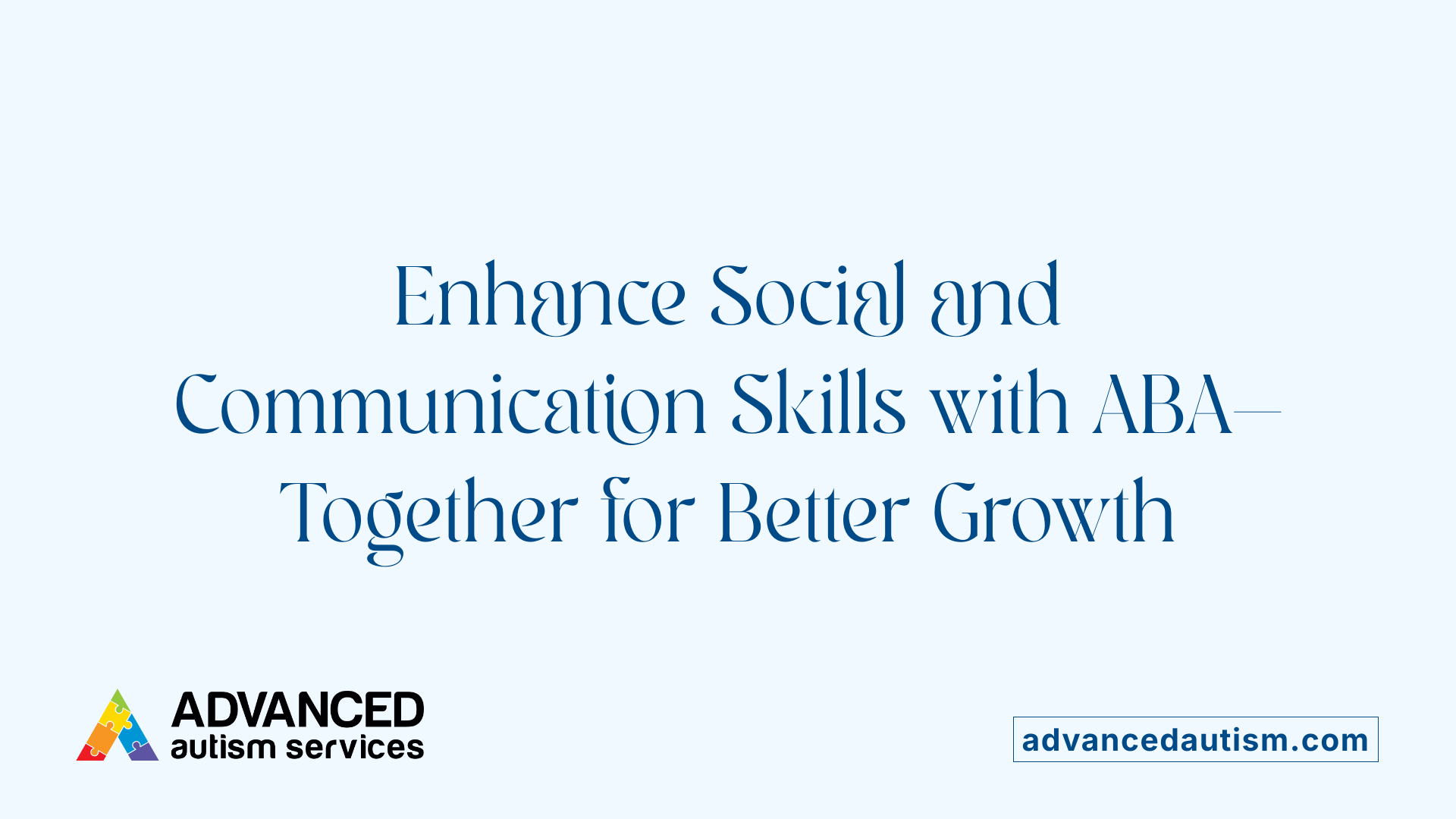
How does ABA therapy support the development of social and communication skills in children with autism?
ABA therapy plays a crucial role in helping children with autism improve their social and communication abilities. It employs structured approaches such as positive reinforcement, modeling, and role-playing to teach children how to communicate effectively and understand social cues. Tailored to each child's specific needs, ABA focuses on enhancing both verbal and non-verbal skills.
One of the main strategies involves breaking down complex social behaviors into smaller, manageable steps. For example, children learn to recognize facial expressions, interpret gestures, and respond appropriately in conversations. These skills are developed through consistent repetition and reinforcement, encouraging children to engage more confidently with peers and adults.
Early intervention is vital, as it can lead to meaningful improvements in social interactions and emotional regulation. Therapists continuously assess progress, tweaking approaches to ensure each child gains skills that promote independence and better relationships.
Overall, ABA therapy helps children to initiate and maintain conversations, understand social signals, and navigate various social situations more successfully. This comprehensive support greatly enhances their quality of life, enabling them to connect with others more effectively.
The Synergy of ABA and Speech Therapy
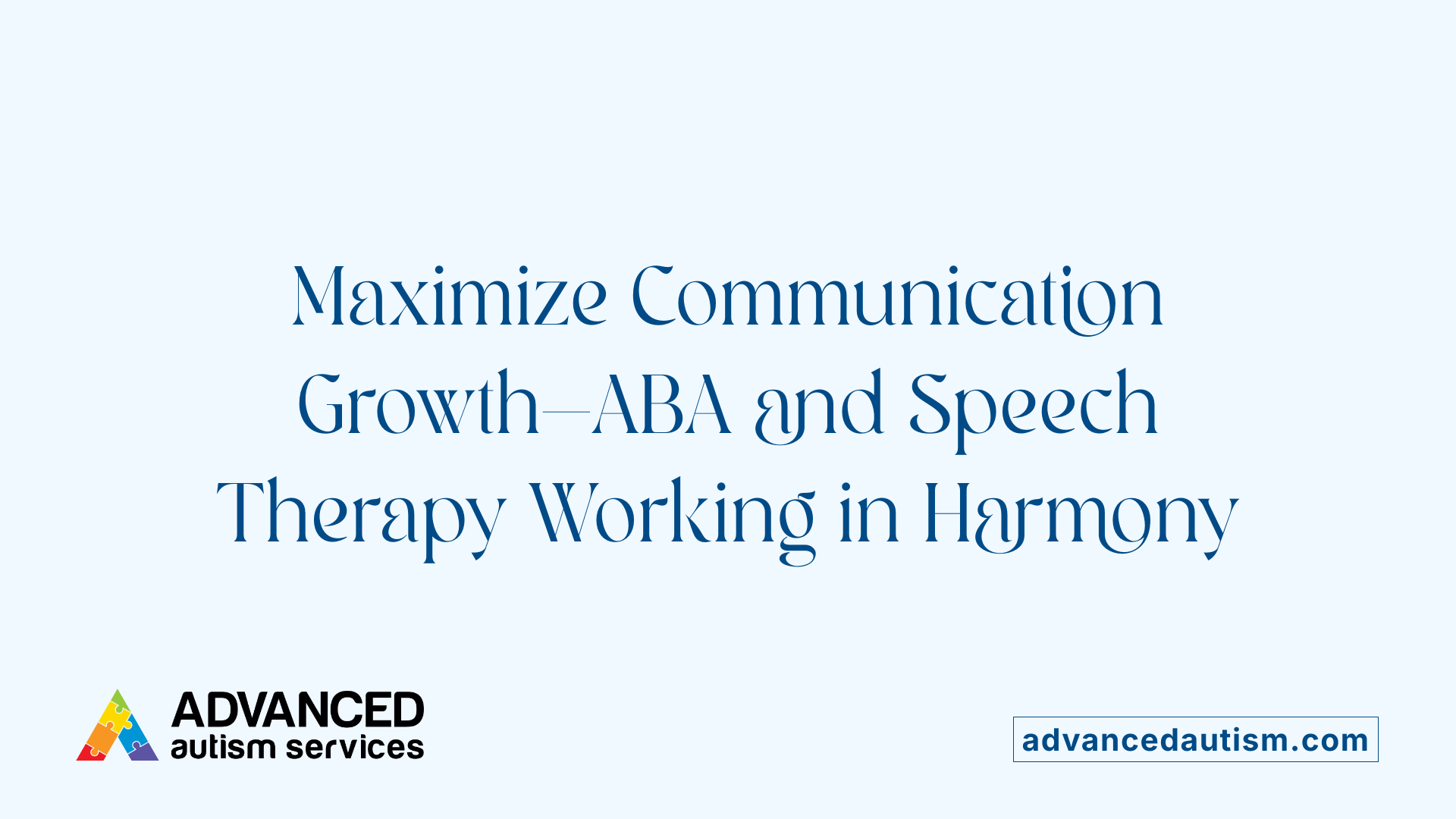
How do ABA therapy and speech therapy work together to improve communication?
ABA therapy and speech therapy are mutually supportive methods that work hand-in-hand to enhance communication in children with autism. Speech therapy primarily aims at boosting both spoken and non-verbal language skills, focusing on techniques for articulation, language development, and social communication. This often involves tools like AAC (Augmentative and Alternative Communication) systems for children who are non-verbal.
Meanwhile, ABA (Applied Behavior Analysis) uses behavioral strategies such as positive reinforcement, prompting, shaping, and modeling to teach functional communication skills. It also addresses behavioral issues that may hinder learning.
When combined, these approaches reinforce each other's efforts, helping children transfer communication skills across different settings. For instance, a child might learn to use sign language in therapy sessions and then apply that understanding during play or at school.
How does this integrated approach assist in generalizing skills?
Generalization is crucial for children to use their communication skills in everyday life. In-home ABA therapy, especially in places like Atlanta, GA, offers the advantage of familiar surroundings where children can better transfer learned skills to real-world situations.
By working across environments with both therapists and family members, children learn to apply communication techniques consistently. For example, if a child learns to recognize facial expressions through ABA, and understands social cues via speech therapy, they are more likely to interpret emotions correctly in social settings.
How are goals set collaboratively?
A unified approach involves close collaboration between ABA practitioners and speech-language pathologists. They align their goals based on each child's unique needs. This ensures consistency in cues, reinforcement, and techniques used across therapy sessions and home routines.
Such cooperation also allows for flexible adjustments to strategies, like focusing on turn-taking or understanding social contexts. Regular communication and shared objectives foster a supportive environment that nurtures ongoing progress.
| Aspect | Focus Area | Goal | Who is Involved |
|---|---|---|---|
| Communication Development | Verbal & Non-verbal skills | Mastering gestures, sign language, expressive speech | Speech-language pathologists, ABA therapists |
| Behavioral Skills | Social cues and interaction | Recognizing facial expressions, turn-taking | ABA therapists, caregivers |
| Skill Generalization | Across environments | Applying communication in home, school, social settings | All involved in varied settings |
| Goal Setting | Customized planning | Individualized plans based on child's needs | Therapists, parents, caregivers |
Final thoughts
Integrating ABA therapy with speech therapy creates a comprehensive support system that enhances communication, social interaction, and behavioral skills. This teamwork helps children with autism develop core skills that promote independence and a better quality of life.
Scientific Evidence Supporting ABA's Effectiveness
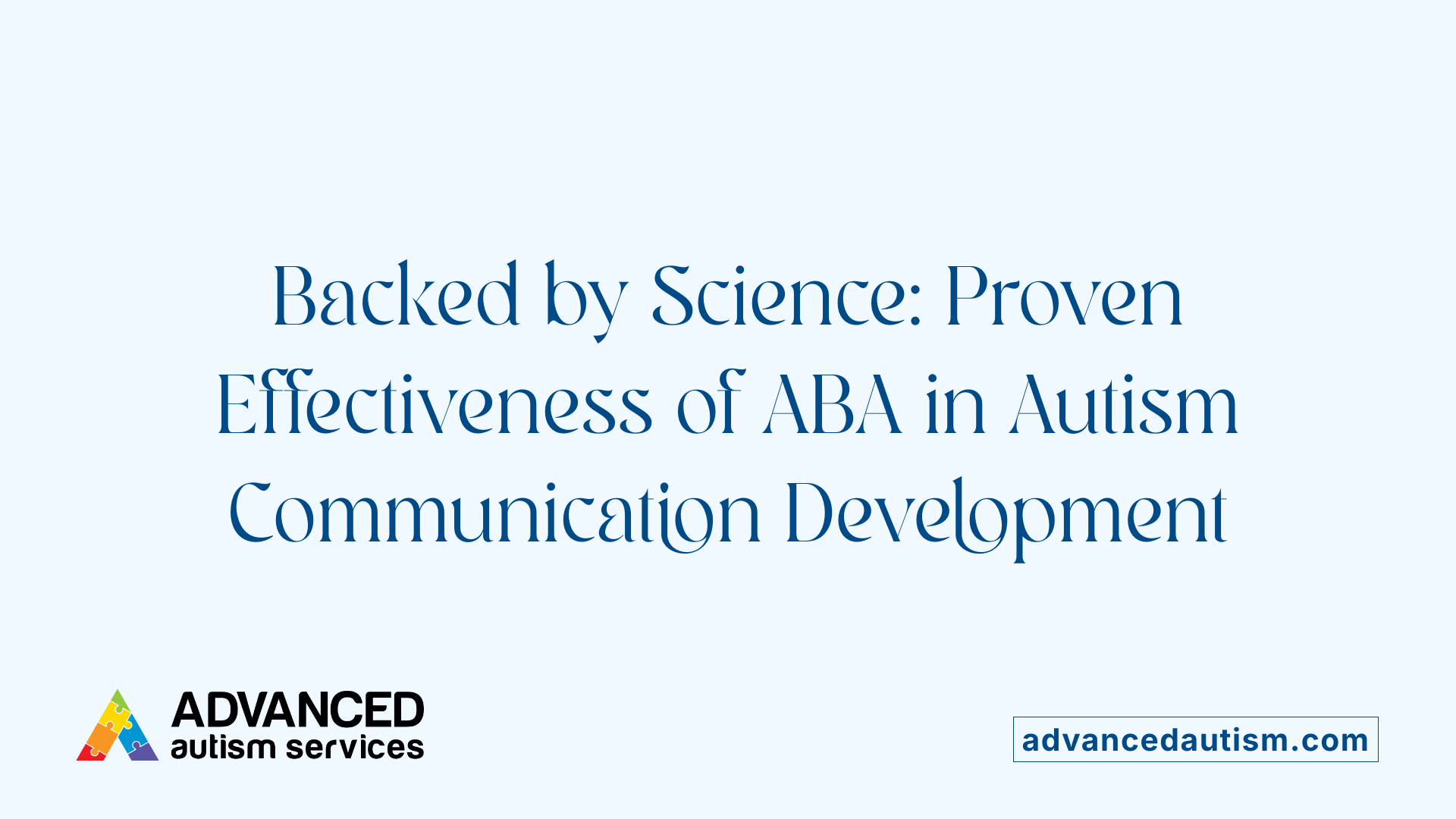 What scientific evidence supports the effectiveness of ABA therapy in developing communication skills in non-verbal children with autism?
What scientific evidence supports the effectiveness of ABA therapy in developing communication skills in non-verbal children with autism?
Numerous scientific studies affirm the positive impact of Applied Behavior Analysis (ABA) on communication development among non-verbal children with autism. Meta-analyses conducted by researchers like Virués-Ortega (2010), Makrygianni et al. (2018), and Reichow et al. (2018) have demonstrated that ABA interventions lead to meaningful improvements in language, social engagement, and cognitive skills.
These comprehensive reviews show effect sizes ranging from moderate to very large, indicating that children receiving ABA tend to develop better communication capabilities compared to those without such interventions. Controlled research studies that utilized pre-and post-assessment designs report statistically significant gains, particularly in expressive and receptive language abilities.
The foundation for ABA's success lies in learning theories such as positive reinforcement and task analysis, which have been validated through decades of rigorous research. For example, effect sizes around 0.65 for communication improvements highlight the strength of these approaches.
Major health organizations recognize the scientific foundation of ABA therapy. The U.S. Surgeon General and the American Psychological Association have endorsed ABA as a highly effective, evidence-based approach for fostering communication skills in children with autism. Over a thousand peer-reviewed articles support this endorsement, underscoring the therapy's credibility and proven benefits.
In summary, robust scientific evidence confirms that ABA significantly enhances communication abilities in non-verbal children with autism, supporting its continued use as a primary intervention.
Enhancing Family and Community Involvement in ABA
Training parents and caregivers in reinforcement strategies
Involving families in ABA therapy is essential for consistent skill development. Parents and caregivers are trained to use positive reinforcement, such as praise or rewards, to encourage children when they correctly use communication skills or behave appropriately. This training helps create a unified approach across different settings, ensuring that children receive support both during therapy sessions and at home.
Reinforcing skills through daily routines
Integrating ABA techniques into everyday activities further boosts learning. Caregivers are encouraged to reinforce communication and social skills during daily routines like mealtime, dressing, or play. Repetitive practice during natural situations helps children understand and apply their skills in real-life contexts, making learning more meaningful and effective.
Fostering generalization of skills
A crucial goal of ABA therapy is the generalization of skills across environments and social settings. To achieve this, therapists collaborate with families and community members to practice skills in various contexts. Consistent reinforcement and modeling by parents and teachers help children transfer what they learn in therapy to classrooms, community outings, and social gatherings. This comprehensive approach supports children in becoming more independent and confident in engaging with others.
| Strategies | Focus Areas | Implementation Tips |
|---|---|---|
| Parent training in reinforcement | Communication, Behavior | Use praise, rewards; stay consistent |
| Embedding skills in routines | Daily activities | Practice during meals, dressing, play |
| Promoting generalization | Multiple settings | Practice skills in school, community, home |
Engaging families and communities in ABA fosters a supportive environment that amplifies the therapy’s impact, helping children develop vital communication, social, and daily living skills for a more independent life.
Summarizing the Power of ABA in Autism Support
ABA therapy stands as a cornerstone in supporting communication development for non-verbal children with autism. Its scientifically validated methods, individualized strategies, and collaborative approach with speech therapy significantly improve children's expressive and receptive language, social skills, and independence. Early intervention and family involvement amplify these benefits, translating skills learned in therapy into daily life, and fostering meaningful inclusion. As research continues to support ABA's effectiveness, it remains a vital tool in enhancing the quality of life for children with autism and their families.
References
- Making Progress with Nonverbal Autism Through Private ABA ...
- Combining ABA With Speech Therapy - Motivity
- How ABA Therapy Improves Communication and Language Skills
- The Role of ABA Therapy in Enhancing Communication Skills
- How ABA Therapy Can Improve Communication Skills in Children
- ABA Techniques: Approaches to Nonverbal Communication in Autism
- Teaching nonverbal autistic children to talk - Autism Speaks
- Making Progress with Nonverbal Autism Through Private ABA ...
- 6 Life-Changing Benefits of ABA Therapy for Children with Autism



